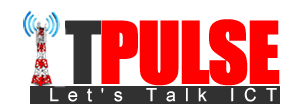Omni channel communications, as predicted for the past few years, has seen rapid uptake, with businesses using websites and social media channels alongside email and audio
As businesses continue evolving to meet changing customer behaviour, the uptake and investment in cloud-unified communications platforms and tools will continue to soar. Businesses are increasingly realising that they must meet customers at a time and digital channel of their choosing, which leads to increased adoption of fully fledged Omni Channel solutions. This adoption augments two core strategies in most businesses, firstly in enhancing a customer intimacy strategy and extending the lifetime value of a customer and secondly in operational efficiency which enables greater automation and integration with underlying systems.
Microsoft Teams has bedded down as a de facto internal communications tool and video conferencing as the external leg but is well behind with phone deployments. According to BMI research, only one in 25 South African Teams users make use of the phone system. This is mostly due to a higher cost than alternatives as well as a lower feature set.
Trends that gained the most momentum in 2022
- There was an increased reliance and need to invest in cloud security. This trend will not slow down, as high-profile breaches make cloud security one of the most important considerations for all businesses.
- CRM platforms have evolved into fully-fledged ERP solutions, with two of the most obvious examples being Salesforce and Zoho. This means that cloud-native systems such as these are going head-to-head with legacy ERP systems such as SAP and Oracle. The main driver of this is that reliance on legacy becomes a handbrake on organisations in that their time to change is too slow for the ever-evolving environment.
- Omni channel communications, as predicted for the past few years, has seen rapid uptake, with businesses using websites and social media channels alongside email and audio
- What started as remote working during the pandemic has shifted into “work from anywhere”. A Steelcase survey found that 87% of employees around the world prefer to work from home for one day a week. Businesses need to plan with this in mind.
- While automation has long been touted as the biggest trend, it has seen somewhat lacklustre uptake. This is not through any disinterest or a lack of desire but has everything to do with the underlying infrastructure and systems it relies on not being ready to support automation fully.
Looking ahead – trends for 2023
- Voice-activated shopping to change the game
Voice-activated shopping has enjoyed huge global growth. Last year, it was expected that its value would increase from $ 5 billion to a staggering $ 19,4 billion by next year. Any business that is planning an eCommerce strategy and overlooking this will clearly be missing out on a massive opportunity. Remember, customers want to engage when and where they choose, and voice-activated shopping means they can search for, and buy, products while on the move or performing another task.
Retailers that have kiosks or showrooms in retail centres may well look at installing voice-activated systems for walk-in customers so they don’t have to wait to be helped by a person, or interact with touchscreens in the aftermath of Covid-19. For the ever-digital-savvy shopper, this is an appealing channel.
- Social buying to reach younger shoppers
This trend has been building momentum and is expected to speed up rapidly in the coming year. This is where shoppers can buy through a brand’s own website or through social platforms themselves. Live stream shopping is an interesting trend that is gaining momentum around the world and businesses should consider spending more time investigating and including social buying in their eCommerce strategies.
- Demand for asynchronous communication to surge
Demand for Asynchronous communication will continue to increase. If we cast our minds back to when we only had email as a means of text communication with customers, it was acceptable to reply the following day. The text generation has ended this. Today, the first five minutes are crucial. If you fail to respond within those golden five minutes, there is a 90% drop-off of engagement. This need to strike while the iron is hot has opened the window for asynchronous communication systems with the ability to respond almost immediately.
- Silos to fall faster
As noted for 2022, the move of cloud-native CRM systems into fully-fledged ERP solutions is changing the landscape. This may not be the case for some industries, such as manufacturing, but definitely is the case in businesses relying on customer engagement. The cloud-native solutions will replace traditional legacy ERP systems at an increasing pace.
- Security security security
As noted for 2022, 2023 is no different in that cloud security will continue to be one of the biggest priorities for businesses (https://bit.ly/3WfX0Qd). Cybercriminals and high-profile breaches will keep all providers on their toes to improve and invest in security solutions. Equally, compliance will continue to attract attention due to the large amount of data being harvested. As it stands, there are clear regulations protecting consumers on some channels but not on others.
The regulation will continue to play catch up.
- A rush to omni channel to meet changing buying behaviours
Omni channel platforms are going to become more sought after as businesses race to keep up with their ever-evolving customers. Omni channel solutions aren’t just for selling but are crucial in information gathering in the lead-up to the buying decision. This necessitates the seamless integration of email, chat, voice, social media, and more. 2023 will see an increased reliance on integrated systems that can interoperate with other cloud solutions.
- Increased engagement via the website
As this new era of communications comes fully into effect, the future uses of API integrations are becoming more clear. Many businesses are embedding pivotal unified communication features in their websites (https://bit.ly/3XbOV05) and applications. API integrations to unified communications will become more sophisticated throughout 2023 and beyond and will expand as time progresses.
- Rise of the machines? Not yet
Both the process and automation layers of robot process automation (RPA) will become more integrated with other technologies as end-users and RPA vendors look to build on the basic capabilities of RPA software. The concept of the digital assistant will continue evolving, whether in the form of virtual assistance or actual physical assistants, as seen in restaurants in Japan and other areas, for example. The key here, as mentioned previously, is that this technology relies heavily on the underlying systems.
Machine learning and AI-powered technology has given chatbots greater power than ever before. Currently, it is estimated that chatbots could handle up to 69% of chats from start to finish, but if businesses want to exploit this then they need to ensure that their underlying operation support systems and business support systems can support machine learning and artificial intelligence capabilities. The poor use/deployment of chatbots remains an obstacle to full-scale adoption.





